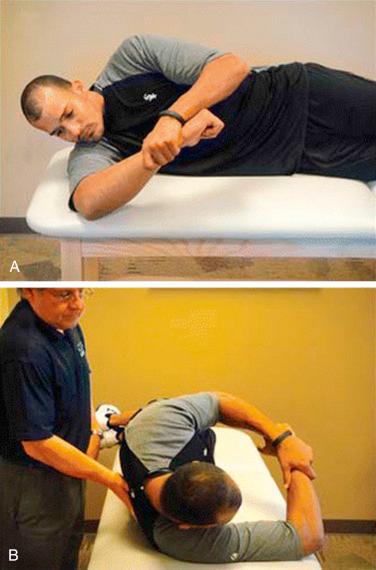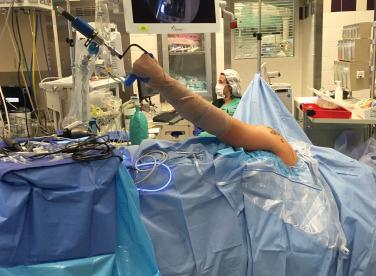Physical Address
304 North Cardinal St.
Dorchester Center, MA 02124
Pathology involving the superior labrum presents a diagnostic and therapeutic challenge for the arthroscopic surgeon. First described by Andrews and colleagues in 1985, Snyder later classified lesions of the superior labrum into four types and coined the term SLAP tear (superior labral tear anterior–posterior). Since that time, other authors have expanded this classification to the current inclusion of ten different types. Concomitantly, the incidence of surgically treated tears has increased up to 5.5-fold. An area that is anatomically variable, biomechanically controversial, and increasingly recognized has become a source of much controversy in terms of management. With extremely variable rates of return to preinjury function, ranging from 22% to 64%, this is particularly true in the throwing shoulder. Proper treatment of overhead athletes requires a thorough understanding of the adaptive and pathologic biomechanics and goals of rehabilitative treatment strategies.
The disabled throwing shoulder, with a suspected pathologic SLAP lesion, is initially subjected to appropriate rehabilitation. Isolated lesions refractory to nonoperative measures are offered surgical treatment after extensive counseling regarding natural history and expectations. Arthroscopic anatomic SLAP repair is the mainstay of surgical treatment in the young competitive thrower and remains the gold standard. Controversies remain, including the role of tenodesis, anterior repair, and simultaneously addressing concomitant pathology.
Pain is most often the reason for initial presentation, occurring commonly in late cocking and early acceleration phases of the throwing cycle.
Often there are associated mechanical symptoms such as “popping” and “catching”.
Throwers may complain of a “dead arm” with loss of velocity and control.
More often younger athletes present with complaints of instability, or report onset after a traumatic injury.
Tensile, torsional, compressive, and shear forces on the biceps-labral complex have been implicated in the development of a SLAP lesion, making a single, unifying mechanism unlikely.
Inspection
Scapular rhythm and kinematic abnormalities
Shoulder asymmetry, muscle atrophy
Range of motion
Internal and external rotation with shoulder abducted to 90 degrees
Throwers commonly exhibit a shift in total arc with increased external and decreased internal rotation.
Total arc of motion of each shoulder should be symmetric as arcs with deficits of 5 degrees or greater arc predictive of increased injury.
Glenohumeral internal rotation deficit (GIRD) is present if the internal rotation side-to-side difference is greater than 20 degrees, predisposing the athlete to SLAP tears and internal impingement ( Fig. 54.1 ) .

Strength
Rotator cuff muscle strength should be carefully tested.
Weakness with examination is indicative of rotator cuff pathology potentially from internal or subacromial impingement.
Specialized tests
A multitude of specific tests have been described to improved detection of SLAP lesions.
Active compression test (O’Brien Test)
Internal rotation resistance strength test (Zaslav Test)
Crank
Biceps load I and II (Kim Test)
Dynamic Labral Sheer Test (O’Driscoll Test)
Whipple test
Anterior slide test
Labral tension Test
Despite reported good to excellent diagnostic results, independent research comparing examination with intraoperative findings have concluded clinical findings in isolation are of limited value to the clinician.
Multiple positive tests with the appropriate clinical history are likely the most indicative of a symptomatic SLAP lesion.
Standard radiographs
Glenohumeral AP, scapular Y, and axillary are obtained routinely and are useful in identifying associated pathology; however, their ability to detect a SLAP tear is limited unless a supraglenoid tubercle avulsion is present.
Magnetic resonance Imaging
Gold-standard diagnostic imaging study; however, anatomic variation of the superior labral complex has led to significant dispute in specificity.
Initial studies demonstrated diagnostic limitation of noncontrast MRI and improved specificity (approaching 90%) with magnetic resonance arthrogram ( Fig. 54.2 ) .

In throwing athletes, MRI arthrography with the arm positioned in abduction and external rotation enhances visualization of the articular-sided rotator cuff and can be particularly valuable in in detecting partial-thickness articular-sided and intratendinous tears.
MRI is also useful to evaluate concomitant pathology of the rotator cuff, acromioclavicular (AC) joint, and bicep tendon proper.
Despite advancements in MRI, arthroscopy remains the gold standard for diagnosing SLAP lesions.
Nonoperative
Recent reports note nonoperative management of type II SLAP lesions in the throwing athlete is associated with not only greater return to competition but also greater return to the same level of competition.
Relative rest, nonsteroidal antiinflammatory drugs (NSAIDS)
Stretching focused on the posterior capsule
Throwers with clinical findings of a tight posterior capsule are disposed to SLAP lesions and should undergo a regimented effort at posterior capsular stretching. This is coupled with a strengthening program focused on improving scapular weakness and dyskinesis.
Operative
Diagnostic arthroscopy is perhaps the most important tool in confirming diagnosis of a SLAP lesion.
Once confirmed, management of the disabled thrower with a pathologic SLAP lesion is a controversial topic. Despite satisfactory pain relief approaching 90%, return to overhead throwing has been less tangible, reported between 22% and 64% with operative treatment
The throwing shoulder with SLAP pathology must be thought of separately with more specific outcomes, measures, and understanding of associated pathology.
Repair
Isolated biceps tenodesis
Given the important role in stabilizing the shoulder during pitch, concern remains regarding the effect this has on the throwing shoulder, despite becoming accepted treatment in many nonthrowers.
Repair with tenodesis
Tenotomy
Anatomy of the biceps-labral complex exhibits considerable variability. The medial attachment of the superior labrum inserts directly into the bicep tendon distal to the tendons insertion forming a synovial recess, which extends several millimeters medially to the superior glenoid articular margin. Multiple studies have noted that the majority of shoulders have an entirely posterior or posterior-dominant labral insertion of the biceps, but the attachment is variable and may be posterior, posterior-dominant, or equally anterior and posterior into the superior labrum. In addition, there are at least three predominate labral variations that occur in over 10% of people. Posterior biceps attachment, sublabral foramen, and variable anatomy are commonplace; therefore one must critically evaluate the anatomy of the biceps-labral complex prior to diagnosing a pathologic superior labral lesion at the time of arthroscopy.
Correct diagnosis of a pathologic SLAP lesion requires a culmination of the patient history, proper physical examination, and astute interpretation of MRI and/or arthroscopic findings. Surgical intervention is indicated in overhead throwers if the patient experiences persistent disabling symptoms, despite addressing capsular stretching, scapular dynamics, and focused throwing kinetic chain training supervised by a physical therapist specially trained in the management of overhead athletes. SLAP tears in isolation, refractory to appropriate rehabilitation, are uncommon and, when encountered, may necessitate surgical treatment when considered the primary causative factor for shoulder dysfunction.
General anesthetic is administered with or without preoperative interscalene nerve block.
Examination under anesthesia is performed on both shoulders. Range of motion is recorded. Particularly close attention is paid to document objective signs of translation with anterior load and shift and posterior push-pull, as SLAP lesions may result in increased translation. Further attempt is made to detect and reproduce catching or clicking suggestive of mechanical block.
Following examination, the patient is placed in lateral decubitus position and supported with a bean-bag positioner. Standard prep and drape follows ( Fig. 54.3 ) .

The arm is placed in 10 lbs of in-line suspension, in a position of 10 degrees forward flexion and 45 degrees abduction.
Become a Clinical Tree membership for Full access and enjoy Unlimited articles
If you are a member. Log in here